7 أجزاء ميكانيكية أساسية يجب على المبتدئين معرفتها
مرحباً بكم في مدونتي!
يسعدني وجودك هنا! قبل أن نتعمق في المحتوى، أود أن تنضموا إليّ على منصات التواصل الاجتماعي. هناك أشارككم أفكارًا إضافية، وأتواصل مع مجتمعنا الرائع، وأُطلعكم على آخر الأخبار. إليكم كيفية البقاء على تواصل:
📘 فيسبوك: شركة شنغهاي لييروو الصناعية التجارية المحدودة
الآن، لننطلق في هذه الرحلة معًا! آمل أن تجدوا هذا المحتوى مفيدًا ومُلهمًا وقيّمًا. هيا بنا!
جدول المحتويات
مقدمة
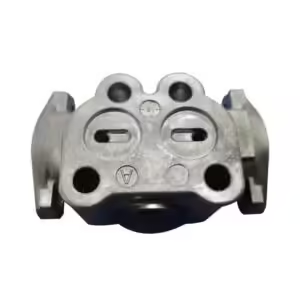
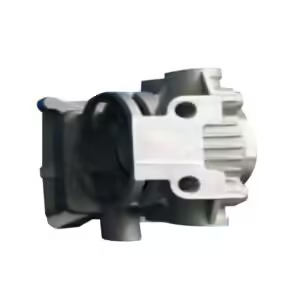
When diving into the world of automotive mechanics, having a solid understanding of الأجزاء الميكانيكية الأساسية is essential. These components form the foundation of any vehicle’s function, influencing everything from safety to performance. For beginners, grasping these core parts helps in diagnostics, maintenance, and communicating effectively with professionals.
Automobiles are intricate machines composed of hundreds of moving parts. While some elements are complex, others fall into the category of basic mechanical parts, which beginners can learn to identify and understand. This guide explores seven must-know parts every car enthusiast or new mechanic should be familiar with.
NO 1. The Engine: The Heart of Basic Mechanical Parts
At the core of every automobile lies the engine. It’s arguably the most vital among all basic mechanical parts. The engine converts fuel into motion, powering the entire vehicle. There are different types of engines, including inline, V-type, and electric motors in modern cars.
Key functions of the engine include:
- Fuel combustion
- Motion generation
- Power distribution
Understanding the basics of engine operation, such as the role of pistons, cylinders, and crankshafts, is crucial for beginners. The pistons move within the cylinders, compressing fuel and air for combustion. The crankshaft converts the pistons’ up-and-down motion into rotational force that drives the wheels. Regular maintenance like oil changes and air filter replacements can greatly prolong engine life. Checking spark plugs, monitoring coolant levels, and watching for signs like knocking noises or smoke are also critical for engine health.
NO 2. Transmission System: Power Management in Basic Mechanical Parts
Another indispensable component among basic mechanical parts is the transmission. This system transmits the engine’s power to the wheels, allowing the car to move. It manages gear changes and ensures the engine operates efficiently within its optimal power range, adapting torque based on driving conditions.
There are three main types of transmissions that beginners should understand:
- Manual transmission: Requires the driver to shift gears using a clutch pedal. Offers better control and fuel efficiency but demands more skill.
- Automatic transmission: Changes gears automatically based on speed and load. It’s easier to operate and common in modern vehicles.
- Continuously Variable Transmission (CVT): Uses a belt and pulley system to provide smooth, stepless gear transitions. Known for better fuel efficiency and seamless acceleration.
Each type requires specific maintenance practices. Manual transmissions need regular clutch checks, while automatics and CVTs rely heavily on fluid integrity. Signs of transmission trouble include:
- Delayed or rough gear shifts
- Slipping gears
- Unusual noises (grinding, whining)
- Warning lights on the dashboard
To keep the transmission system healthy, beginners should:
- Check and replace transmission fluid at recommended intervals
- Inspect for leaks under the vehicle
- Pay attention to driving behavior, avoiding excessive towing or abrupt acceleration
Understanding the transmission system equips car owners with the knowledge to prevent premature wear and costly repairs. It’s a crucial link in ensuring smooth and efficient vehicle operation.t traditional gear steps. Learning how to recognize signs of transmission trouble, such as delayed gear shifts or strange noises, is vital. Routine maintenance includes fluid checks, filter changes, and watching for transmission fluid leaks.
NO 3. Brake System: Crucial Safety in Basic Mechanical Parts
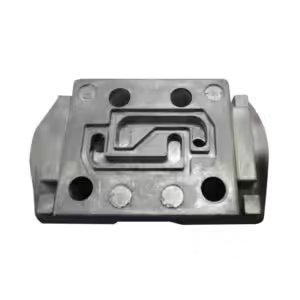
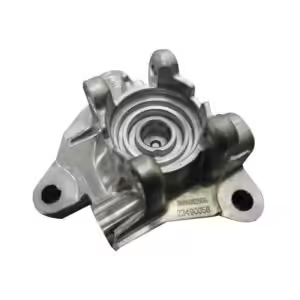
Among the most important safety-related basic mechanical parts is the brake system. It enables the vehicle to slow down or come to a complete stop. A standard automotive brake system includes:
- Brake pads
- Rotors (or discs)
- Brake lines
- Calipers
There are two main types of brakes:
- Disc brakes
- Drum brakes
Brakes use hydraulic force to apply pressure to the wheels, creating friction. Disc brakes are common on modern vehicles due to their effectiveness in various conditions, while drum brakes are often found on rear wheels or older models. Regular inspection of brake pads, rotors, and fluid levels ensures responsive braking performance. Grinding noises, pulsating pedals, or warning lights are signs that the braking system needs attention.
NO 4. Suspension System: Comfort and Control in Basic Mechanical Parts
The suspension system is one of the basic mechanical parts that contributes to both comfort and safety. It connects the car to its wheels and absorbs shocks from the road.
Essential components of the suspension system include:
- الينابيع
- Shock absorbers (or struts)
- Control arms
- Stabilizer bars
A well-maintained suspension system helps in:
- Reducing wear on tires
- Enhancing steering control
- Improving ride comfort
Springs absorb the initial impact from road irregularities, while shock absorbers dampen the movement to prevent bounce. Stabilizer bars improve cornering by minimizing body roll. Beginners should be aware of symptoms of suspension issues such as uneven tire wear, nose-diving during braking, or a bumpy ride. Proper alignment and timely replacement of worn parts are key to suspension longevity.
NO 5. Steering System: Navigation Control Among Basic Mechanical Parts
The steering system is another essential among basic mechanical parts, allowing drivers to guide the vehicle. Most modern vehicles use power steering, which can be hydraulic or electric.
Key steering components include:
- عجلة القيادة
- Steering column
- Rack and pinion or steering gearbox
- Tie rods
A functional steering system ensures precise handling and maneuverability. The rack and pinion mechanism converts the steering wheel’s motion into lateral movement of the wheels. Problems such as stiffness, wandering steering, or unusual noises during turns should prompt an inspection. Low power steering fluid or worn tie rods can severely impact handling and safety. Routine checks and maintaining proper fluid levels are important.
NO 6. Exhaust System: Emission Control in Basic Mechanical Parts
The exhaust system, though often overlooked, is crucial among basic mechanical parts. It manages and expels combustion gases safely from the engine. Additionally, it plays a role in noise reduction and emissions control.
Main components include:
- Exhaust manifold
- Catalytic converter
- Muffler
- Tailpipe
The exhaust manifold collects gases from the engine’s cylinders and directs them to the catalytic converter, which reduces harmful emissions. The muffler dampens engine noise, and the tailpipe channels the gases out of the vehicle. A malfunctioning exhaust system can lead to increased emissions, decreased fuel efficiency, and noise pollution. Routine checks for rust, cracks, and leaks help maintain compliance with environmental regulations and performance standards.
NO 7. Battery and Electrical System: Powering Essential Functions
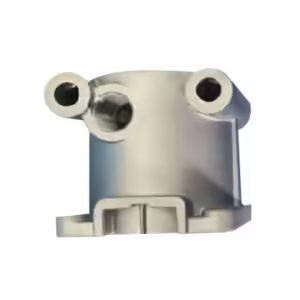

No discussion of basic mechanical parts is complete without mentioning the electrical system. The battery provides the initial power needed to start the vehicle and supports all electrical components.
The electrical system includes:
- Battery
- Alternator
- Starter motor
- Wiring and fuses
The alternator recharges the battery while the engine runs, and the starter motor initiates the ignition process. A failing battery or alternator can lead to ignition problems, dim lights, or malfunctioning accessories. Beginners should learn to test battery voltage, check for corroded terminals, and recognize warning signs like slow cranking or dashboard alerts. Keeping jumper cables on hand and understanding fuse box layout can also be beneficial.
Comparison Table: Basic Mechanical Parts and Their Functions
| Mechanical Part | Primary Function | Signs of Trouble | Maintenance Tip |
|---|---|---|---|
| Engine | Converts fuel to motion | Knocking sounds, overheating | Regular oil and filter changes |
| Transmission | Manages power delivery to wheels | Gear slipping, delayed shifting | Check fluid levels and replace as needed |
| Brake System | Enables stopping and slowing | Squealing, longer stopping distance | Replace pads, flush brake fluid |
| Suspension System | Enhances comfort and control | Bumpy ride, uneven tire wear | Inspect shocks and align wheels |
| Steering System | Directs vehicle movement | Stiff steering, noise when turning | Check power steering fluid |
| Exhaust System | Removes emissions, reduces noise | Loud engine, reduced fuel economy | Check for leaks, replace muffler |
| Battery & Electrical | Powers ignition and electronics | Dim lights, dead battery | Test voltage, clean terminals |
خاتمة
فهم الأجزاء الميكانيكية الأساسية in automobiles empowers beginners to take better care of their vehicles. Recognizing how these parts function and how to identify early warning signs can prevent costly repairs and ensure safer driving.
Familiarity with the engine, transmission, brakes, suspension, steering, exhaust, and electrical systems lays the groundwork for deeper mechanical knowledge. With regular maintenance and a keen eye, any car owner can keep their vehicle running smoothly and extend its lifespan.
الأسئلة الشائعة
What are the most essential الأجزاء الميكانيكية الأساسية to learn first?
Start with the engine, brakes, and transmission. These are vital to vehicle operation and safety.
How can I tell if a basic mechanical part is failing?
Look out for unusual noises, performance issues, dashboard warnings, or fluid leaks.
Do all vehicles have the same basic mechanical parts?
Most vehicles share similar basic mechanical parts, although designs and technologies may vary between models.
Is it possible to maintain الأجزاء الميكانيكية الأساسية myself?
Yes, beginners can handle tasks like checking fluid levels, changing filters, and inspecting belts with minimal tools.
Why is the suspension system important among basic mechanical parts?
It ensures a comfortable ride and keeps the tires in proper contact with the road for control and safety.
فئات المنتجات
- أجزاء الصمامات
- أجزاء مضخة المياه
- أجزاء صندوق المحمل
- أجزاء الصب بالقالب
- منتجات مضخات الفولاذ المقاوم للصدأ
- منتجات مضخات الحديد الزهر
- قطع غيار الصمامات لاستخدام السيارات
- قطع غيار السيارات
- أجزاء الصمامات للاستخدام المدني
- قطع غيار مضخة التفريغ KF

